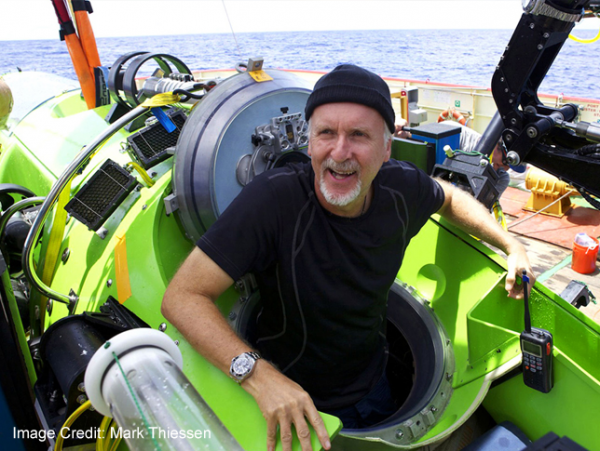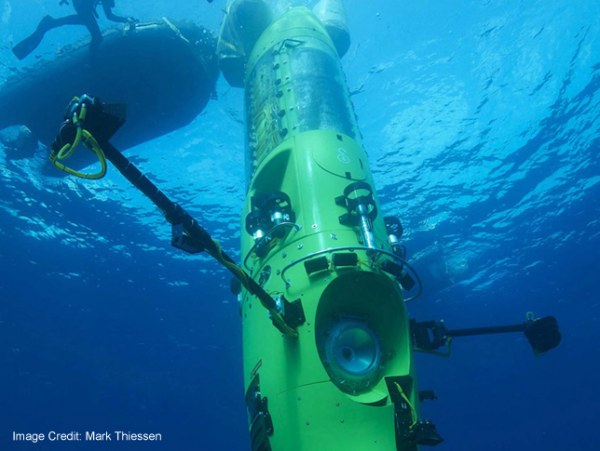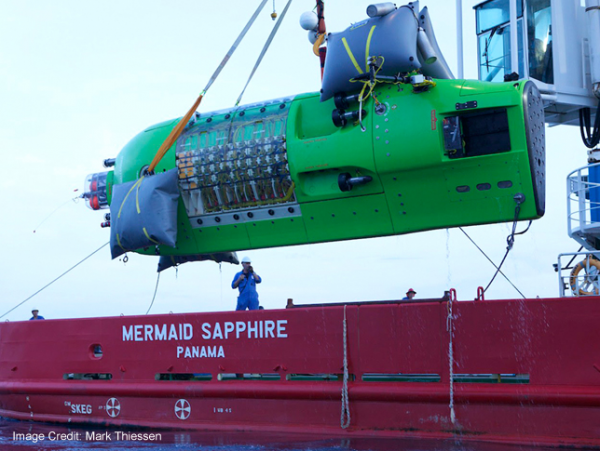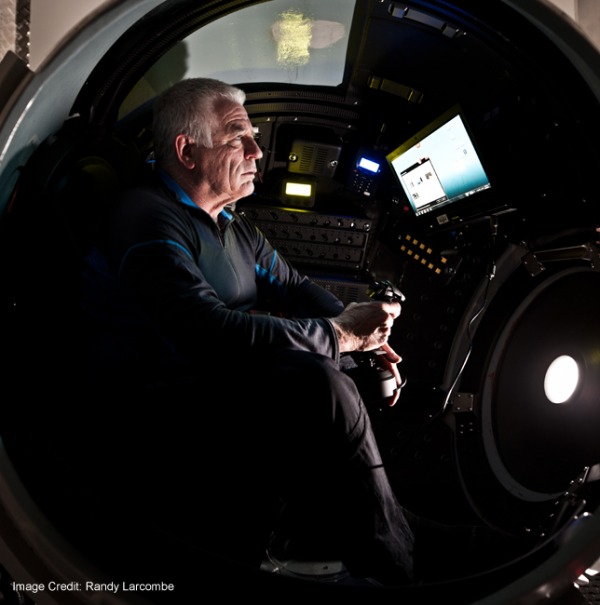





Project Overview
The DEEPSEA CHALLENGER is a single occupant research submersible designed, engineered and built in Australia by film director James Cameron and Ron Allum from Acheron Project. The 12 ton sub was specifically designed to explore the darkest, deepest parts of the ocean. In these areas depths can exceed 11km, which is deeper than Mount Everest is high. The challenges faced were comparable to those in space exploration and critical attention was paid to the physics of deep-water pressure, to the requirements of exploring the bottom of the ocean and to the complete safety of the pilot.
Organisation
Team
Acheron Project
Design + Industry
McConaghy Boats
Finite Elements
Project Brief
In building the DEEPSEA CHALLENGER, Cameron and his team of engineers and scientists wanted to accomplish several objectives:
- To create and operate a vehicle that can carry a human pilot to the deepest sites in Earth’s oceans and perform work with significant bottom time for research activities;
-To demonstrate the ability to dive repeatedly at any given site to gather data, samples, and imagery to create a comprehensive data set;
- To demonstrate the effectiveness of a human-piloted vehicle as a science platform for investigation in the hadal zone, the deepest part of the ocean;
- To demonstrate the successful interaction of piloted, unpiloted, and remotely piloted platforms to perform a broad range of science tasks in concert;
- Beyond just these demonstrations of capability, to return the maximum actual science value from the first expedition;
- To bring back compelling imagery in 3-D of never before seen geological processes and species. This will inspire public interest in exploration and in scientific study of the deep ocean, especially among young people who must become our future scientists, engineers, and explorers.
Project Innovation / Need
The DEEPSEA CHALLENGER is the product of years of dreaming, planning, building, and testing.
The vertical orientation allows the sub to descend and ascend faster than traditional vessels, while still retaining the agility to explore the seabed and traverse canyon walls.
The overall size was dictated by the Life Support Sphere, a 6.4 cm thick steel sphere engineered to withstand deep water pressure. Surrounding this, and making up 70% of the sub's total volume is a 7.3m tall foam structure that acts to keep the heavy steel sphere buoyant. Borne from a requirement for a strong, lightweight syntactic foam, ISOFLOAT™ was developed and patented by lead engineer Ron Allum during the DEEPSEA CHALLENGER project.
The Life Support Sphere is equipped to provide the pilot with oxygen, warmth and a safe constant pressure of 1 atmosphere, while withstanding the 16,500psi outside pressure.
Fitted to the interior of the sphere is an innovative, lightweight carbon composite shell that forms the framework for control assemblies, life-support equipment and pilot seating. With just enough room for a pilot to sit with knees bent up, the layout and configuration of the surrounding equipment was critical in ensuring pilot safety and control functionality.
The sub is fitted with 4 external still cameras, an IMAX-quality Red Epic camera and 2 HD cameras while lighting is provided by large banks of powerful LEDs. A manipulator arm, core sampling equipment and a remotely operated vehicle are utilized by the pilot to interact with the surrounding environment.
Design Challenge
The Deepsea Challenge was every bit as daunting as building a vehicle to take a person to mars. Conditions at the unexplored frontier of Earth’s deepest point are perhaps even more extreme than they are on the moon. The pressure of the ocean so many miles beneath the waves is crushing, the water is near freezing, and the perpetual dramatic geology at the edge of Earth’s colliding tectonic plates were all challenges to overcome.
In the process of meeting these challenges, the DEEPSEA CHALLENGER submersible design & engineering team made historic breakthroughs in materials science, incorporated unique approaches to structural engineering, and innovated new ways of imaging.
After reaching the seafloor, the DEEPSEA CHALLENGER was able to explore the bottom for several hours—dramatically longer than the 20 minutes U.S. Navy Lt. Don Walsh and Swiss oceanographer Jacques Piccard were able to spend there during their expedition in the bathyscaphe Trieste in 1960.
Sustainability
The previous manned dive in 1960 released gasoline into the ocean to regulate buoyancy. Acheron has developed the patented foam ISOFLOAT™ that is inert and resists compression to avoid the need to use hydrocarbon fluids in the craft. This has also assisted in reducing the size of the craft and the size of themother ship required to carry it.
Product Design - Heavy Machinery
This award recognises a component or overall product. Consideration given to aspects that relate to human usage, aesthetics, selection of components and materials, and the resolution of assembly, manufacturing and the overall function.
More Details

